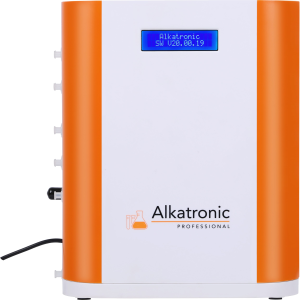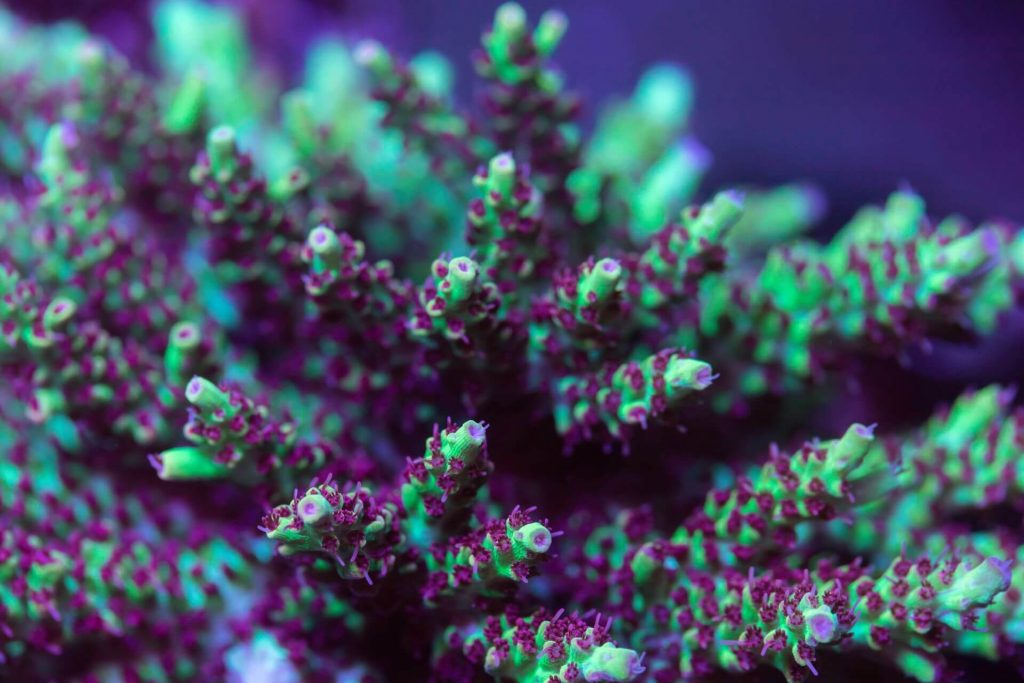Maintaining a thriving reef aquarium can feel like a balancing act, especially when it comes to key water parameters like alkalinity (often measured in dKH). For corals and other marine life to flourish, you need to keep your water chemistry stable and predictable. That’s where Alkatronic steps in. In this post, we’ll explore what Alkatronic is, how it works, and why automated alkalinity control can be such a game-changer for your reef tank.
Why Alkalinity Matters in a Reef Tank
Before diving into the specifics of Alkatronic, it’s vital to understand why alkalinity plays such a crucial role in reef keeping.
1. Coral Growth and Health: Corals need a steady supply of carbonate ions (related to alkalinity) to build their skeletons. If alkalinity fluctuates too much or drops too low, corals can become stressed, lose color (bleach), or experience stunted growth.
2. pH Stability: Alkalinity helps buffer pH and keep it within an ideal range (around 8.0–8.3 for most reef systems). When alkalinity is unstable, pH can swing dramatically, negatively affecting fish, corals, and beneficial bacteria.
3. Nutrient Balance: A balanced alkalinity level allows other parameters—like calcium, magnesium, nitrate, and phosphate—to remain in harmony. Unstable alkalinity can lead to issues with precipitation or imbalances that make it harder to manage your reef ecosystem effectively.
In short, stable alkalinity is the foundation of a healthy reef tank. It creates an environment that promotes coral growth, color, and overall vitality.
What Is Alkatronic?
Alkatronic is an automated alkalinity monitoring and control device designed specifically for reef aquariums. Developed by Focustronic, it measures dKH (degrees of carbonate hardness) at set intervals throughout the day and can make real-time adjustments to keep alkalinity within the user’s desired range. Unlike manual test kits—which can be time-consuming, prone to human error, and require you to take action afterward—Alkatronic automates the testing process. As a result, it’s often praised as one of the best alkalinity auto testers on the market and is a popular choice among advanced reef hobbyists looking to simplify daily maintenance tasks while maintaining ultra-stable parameters.

How Does Alkatronic Work?
1. Automatic Testing: Alkatronic uses a reagent-based testing method to measure alkalinity. At preset intervals (e.g., every 2, 4, or 6 hours), it draws a sample of aquarium water into its internal chamber. It then adds reagent to the water sample and monitors the change in pH to calculate dKH.
2. Real-Time Adjustments: Based on the test results, Alkatronic can automatically dose an alkalinity supplement (like sodium bicarbonate solution) to raise the tank’s alkalinity if it falls below your target range. If alkalinity is higher than desired, it can trigger an alert, prompting you to investigate or adjust your dosing regimen.
3. Data Logging & App Integration: Alkatronic logs each test result, making it easy for you to track alkalinity trends over hours, days, and weeks. You can view this data in a dedicated app or integrate it with third-party aquarium controllers, giving you a comprehensive look at your tank’s parameters.
4. Calibration & Maintenance: Periodic calibration ensures ongoing accuracy. The device prompts you to calibrate pumps and sensors, keeping test results precise. Routine maintenance tasks, such as replacing reagents, are relatively straightforward.
Benefits of Automated Alkalinity Control
1. Consistency for Coral Health
The biggest perk is consistency. By testing and adjusting alkalinity multiple times a day, Alkatronic keeps your parameters far more stable than manual testing might allow. Corals thrive in stable conditions, leading to better color, growth rates, and overall reef health.
2. Time Savings and Convenience
Manual alkalinity testing every day—or multiple times a day—can become a chore. Alkatronic automates the entire process, giving you more time to enjoy your reef instead of fussing with test kits and dosing schedules.
3. Early Problem Detection
Because Alkatronic tests frequently, you’ll quickly notice unusual shifts in alkalinity. This allows you to address potential issues—like equipment malfunctions or changes in coral consumption—before they become major problems.
4. Integrated Dosing Options
Alkatronic can control a dosing pump to add alkalinity supplements as needed. This integration provides real-time corrections, ensuring that any dip in alkalinity is swiftly addressed.
5. Data Tracking and Analysis
With detailed logs of your tank’s alkalinity over time, it’s easier to spot trends, plan coral additions, or fine-tune other elements of water chemistry. Data-driven decisions typically lead to better long-term results.
Step-by-Step Setup Guide
1. Unboxing and Initial Inspection
Check all components: main Alkatronic unit, reagent bottle, pumps, tubes, power supply, and any adapters. Confirm there’s no shipping damage.
2. Placing the Device
Position Alkatronic near your sump or aquarium. Keep it in a location where tube runs to the tank (or sump) are as short as possible. Ensure easy access for refilling reagents and maintenance.
3. Tubing and Pump Connections
Connect the intake and waste tubes according to the user manual. Make sure the intake line is fully submerged in your sump or tank section with stable flow. Wastewater should drain into a container or sink, following local disposal guidelines.
4. Reagent Preparation
Follow the instructions for mixing your Alkatronic reagent. Fill the reagent reservoir and place it securely in the device.
5. Calibration
Perform an initial calibration of pumps and pH probe if required. Use the calibration solutions provided or recommended by the manufacturer.
6. Setting Test Intervals and Target dKH
Access the Alkatronic app or interface. Choose how often you want it to run tests (e.g., every 4 hours). Set your desired alkalinity range (e.g., 8.0–8.5 dKH).
7. Dosing Pump Integration
If you’re using Alkatronic’s built-in control for alkalinity dosing, connect your dosing pump. Program the dosing schedule or let Alkatronic adjust automatically based on test results.
8. Ongoing Maintenance
Replace reagent according to usage and manufacturer’s recommendations. Periodically calibrate to maintain accuracy. Check tubes and connectors for wear or salt creep.
Common Mistakes to Avoid
1. Skipping Calibration
Accurate testing depends on proper calibration. Failing to calibrate pumps and probes can lead to faulty readings and incorrect dosing.
2. Ignoring Reagent Levels
Running out of reagent means no more testing. Always keep an eye on reagent volume, and order replacements before you run out.
3. Improper Installation
Avoid kinks or air bubbles in tubes that can alter test accuracy. Keep the intake and waste lines well-organized and secured.
4. Over-Reliance on Automation
While Alkatronic is a powerful tool, it’s still important to manually test your water occasionally with a reliable kit (or have it tested by a local fish store) to confirm readings.
Integrating Alkatronic with Other Systems
Many reef hobbyists use advanced controllers (such as Apex or GHL) and other automated testers (for calcium, magnesium, nitrates, and phosphates). Alkatronic can integrate seamlessly in a few ways:
• Data Sharing: Log alkalinity data alongside other parameters for a complete snapshot of your reef’s health.
• Alerts and Notifications: Combine test alerts with your controller’s notification system (email or push notifications) so you know the instant something goes off track.
• Advanced Dosing and Control: Some aquarium controllers can use Alkatronic’s data to trigger additional actions—like adjusting calcium or magnesium dosing if they notice a pattern.
Real-World Success Stories
Countless reef keepers credit Alkatronic with saving them from costly livestock losses. By running daily or multiple tests per day, reefers spot abnormal consumption rates early. For instance, if corals start growing more rapidly or if a piece of equipment fails, the Alkatronic’s data reveals abnormal alkalinity drops. Quick adjustments can prevent coral stress, tissue recession, and other signs of trouble. These success stories underscore the importance of consistent, precise, and frequent alkalinity measurements—something only an automated solution like Alkatronic can provide without labor-intensive manual testing.
Troubleshooting & Maintenance
• Erratic Readings: Double-check for bubbles in the lines or a clogged intake. Recalibrate and ensure the reagent has been mixed properly.
• Clogged Waste Line: Salt creep or residue can build up over time. Periodically flush waste lines with fresh water to reduce clogs.
• Software Updates: Keep the firmware current so you can take advantage of any improvements or bug fixes released by the manufacturer.
Conclusion
Alkatronic stands out as a leading automated alkalinity control system for reef aquariums. By offering frequent testing, real-time dosing adjustments, and comprehensive data logging, it tackles one of the most critical aspects of reef keeping with precision and ease. Stable alkalinity is essential for coral health, color, and growth, and Alkatronic’s reliability makes achieving that stability far less daunting for both new and experienced hobbyists alike. If you’ve been struggling to maintain consistent dKH levels or are simply looking for a more hands-off approach to reef tank maintenance, Alkatronic might be the perfect solution. By automating the testing process and integrating seamlessly with popular dosing strategies, it brings peace of mind and better outcomes for your underwater paradise. With the right setup, calibration, and maintenance routine, you can focus more on enjoying the beauty of your corals—and less on constantly testing, worrying, and adjusting parameters. Ready to elevate your reef-keeping experience? Consider incorporating Alkatronic into your setup and see how stable alkalinity can transform your tank into a vibrant marine ecosystem teeming with healthy corals and fish. With consistent monitoring, timely dosing, and the right data at your fingertips, your reef will thrive like never before.


